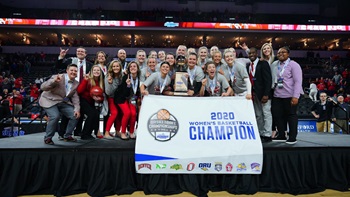A New Approach to Teacher Education USD Taking the Lead
How do you better prepare college seniors to become professional educators? “New teachers need more experience,” says Hee-sook Choi, Ph.D., interim dean of the University of South Dakota School of Education, “and student teaching was typically one semester.” Now, through a grant awarded by the Minneapolis-based Bush Foundation, USD has fully implemented a yearlong teaching residency.
A first year 5th-grade teacher at R.F. Pettigrew Elementary in Sioux Falls, Tiffany Noteboom says her 2013-14 student-teaching residency was invaluable. “It gave me the opportunity to succeed, to feel more confident.”
Over the course of just one semester, Noteboom says, “I wouldn’t have been able to see students grow.” But during the one-year residency, “I saw progress. I saw failures. I saw success.”
The Bush Foundation is investing $40 million in an initiative that aims to transform teacher-preparation programs. Fourteen higher-education institutions in Minnesota, North Dakota and South Dakota will produce at least 25,000 new, effective teachers from 2010 to 2020 — the projected number needed in the three states during that time. Based on the redesign of its teacher preparation-program, USD was the sole South Dakota university or college selected to participate.
And how do the Bush Foundation and participating programs define an “effective teacher?” One who ensures that each child learns at least a year’s worth of knowledge for every year spent in the classroom.
As a result of the success of USD’s new approach to teacher education, the South Dakota Board of Regents now requires adoption of similar programs by its schools within the next five years. “We were in the vanguard,” Choi says.
That has presented challenges, she acknowledges. Not the least of which is that students in the full-time residency have academic courses to complete—without that extra semester in which to do it.
Here’s how it works: In addition to working with students and their teacher mentors, those in the residency program attend classes all day, one day a week at hubs in South Dakota— Vermillion, Sioux Falls—and in Sioux City, Iowa. Coursework is directly related to the residency: classroom management, assessment, use of technology. Choi says students are able to seek advice from professionals and from their peers.
“In college, the emphasis is on theories and teaching strategies,” says Terrance Terry. As the result of a full-ride football scholarship to USD, he is halfway through his residency, teaching sophomore English and modern literature at Sioux Falls Washington High School. “Taking classes at the same time is a lot of work, but the content is relevant to what we’re doing.” Online assignments may explore what to do in specific situations; another examines mentor teachers’ techniques.
“I’m getting a true experience,…dealing with attendance, parents, special education needs.” A former receiver for the Coyotes, Terry is a volunteer football coach at Washington High School, and he makes it a point to go to school events, plays and concerts.
Every student-teaching resident is observed and evaluated three times each semester by university and field supervisors, Choi says. Graduation requirements include passing a national examination.
Another aspiring English teacher, Alaina Cuka, a USD Presidential Alumni scholar, is at Beresford High School. “I knew the residency would be challenging,” she says, “but I thought it would be more observational.”
Definitely not, says Choi, “Students in the residency program are not helpers, they’re not substitutes. They’re teachers.” They’re teachers from whom their mentors can also learn, says Terri Buechler, Ed.D., Cuka’s mentor. “Alaina brings things to the table.” For example, when the class read a story about slavery, Cuka showed illustrations of the cruel shackles once used in the South, so students weren’t envisioning the handcuffs used in police procedural TV shows.
When they taught Ann Bradstreet’s “Verses Upon the Burning of Our House, July 10th, 1666,” Buechler says Cuka brought the anguish of the poet’s loss into the present by giving students one minute to write down what they’d take in the event of a fire in their own homes. “If it’s not on the list, you lose it!” she said.
Those are techniques well worth adopting, Buechler says. “She’s building up her resources — and adding to mine.” “We teach so totally differently,” Buechler says. “But she’ll connect to kids that I won’t and vice versa. I don’t want a little mini-me.”
For Cuka, the yearlong teaching residency is like tightrope walking with the security of a net. “If I don’t know how to handle a situation, I ask Dr. Buechler.
“Just watching her, I’ve learned so much.” Little things—like curbing conversation by moving next to a group of chatterers or quieting the class by speaking in a normal voice. “They’ll quiet to hear you.”
“Bottom line,” Buechler says, “the yearlong residency is good for students. Whether I’m in there or she’s in there, the kids just go on. She starts class when she sees I’m busy. And when students raise a hand, they get an answer twice as quickly.
“It’s not my classroom. It’s our classroom.”
As for Cuka, she looks forward to the 2015–16 school year with confidence. “My first year of teaching will really be my second year of teaching.”
This story originally appeared in the Winter 2014/15 issue of The South Dakotan alumni magazine. Read the full issue.


